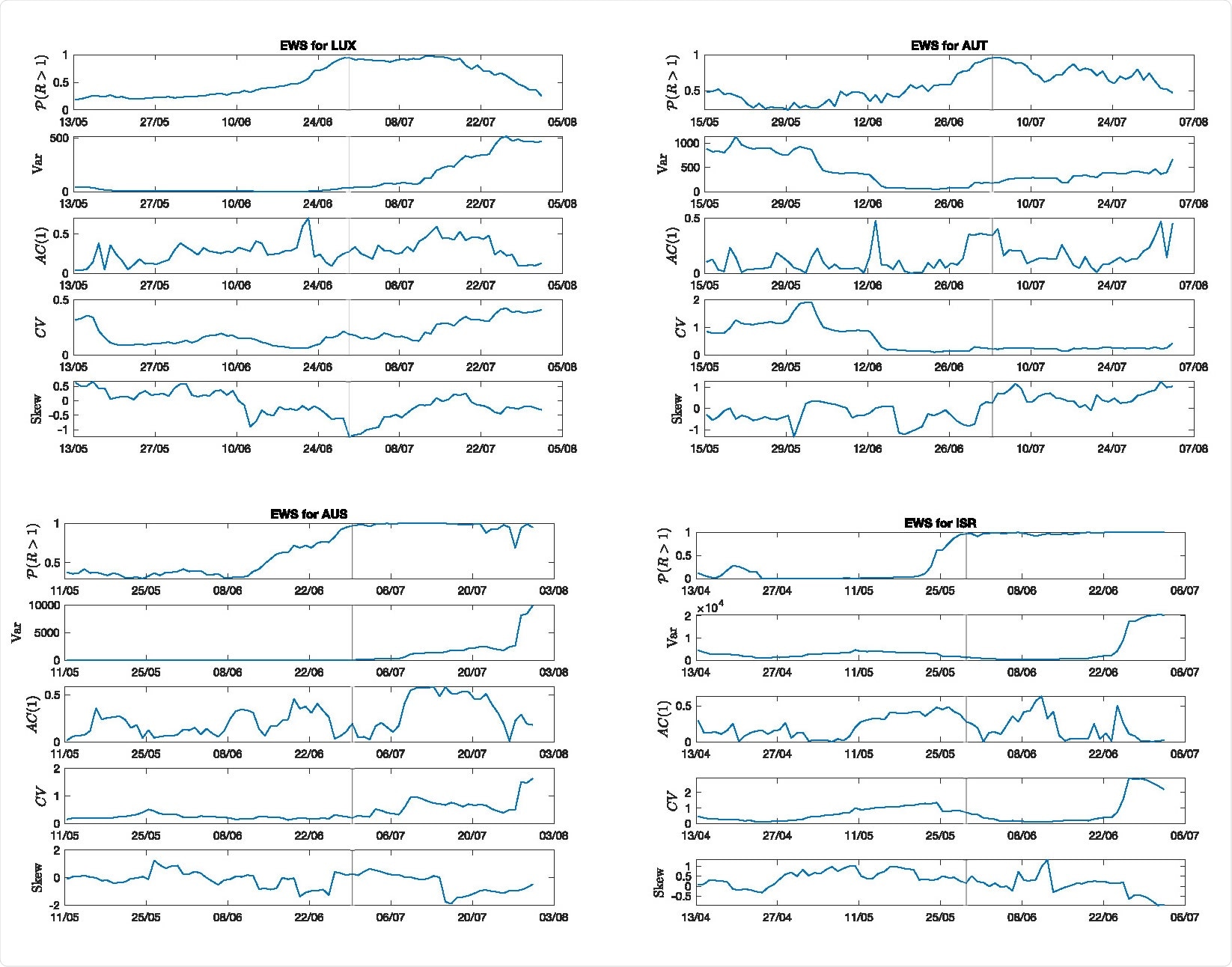The coronavirus disease (COVID-19) pandemic, caused by the severe acute respiratory syndrome coronavirus 2 (SARS-CoV-2), continues to spread worldwide. To date, there are more than 131 million infections and over 2.86 million deaths.
Scientists determine ways to detect and predict disease emergence, particularly those that can pose a global health threat.
Researchers at the Luxembourg Centre for Systems Biomedicine, University of Luxembourg, used worldwide available data about the ongoing COVID-19 pandemic, concentrating on the disease's re-emergence after the first wave in Spring 2020.
The study, published on the pre-print server medRxiv*, shows that early warning signals (EWS) provide expected trends, predicting future epidemics and disease emergence.
.jpg)
Study background
Epidemics and disease outbreaks pose global health threats to human societies. The current coronavirus disease (COVID-19) pandemic has negatively impacted millions of people worldwide.
Developing tools for the fast and early detection of disease emergence is crucial to conduct a science-based risk assessment. This way, scientists can formulate predictive models to prevent the spread of pathogens that could lead to another pandemic.
Yet, the combination of noise, non-linearity, and lack of curated datasets for validation hinder the development of complete models. Many studies have recommended using various methods, agnostic of detailed mechanistic models, which could alert for epidemic dynamics shifts.
Critical transitions are phenomena characterized by system dynamics sudden shifts, wherein the main drivers are bifurcations. Disease emergence is characterized by a transcritical bifurcation when the control parameter R, the average number of secondary infections from the source case in a vulnerable population, crosses the threshold value.
Therefore, epidemics or outbreaks are appropriate candidates for applying statistics early warning signals, like increasing variance before the transition.
The study
In the study, the researchers followed natural experiments' strategy to test theoretical predictions about extensive systems on comprehensive data sets, accounting for potential cofounders.
To arrive at the study findings, the researchers screened the COVID-19 epidemic curves from various countries. The data can help build a testable dataset for EWS predictions and estimates. This can aid in the assessment of their performance based on fundamental assumptions from critical transitions theory.
The team notably considered the disease's re-emergence, termed as the second wave, and its underlying characteristics. These include the rate of R's critical value, system noise, and the quality of prevalence data.

The team observed that if the basic theoretical assumptions are satisfied, EWS can detect the transition to disease emergence. Hence, it can help predict potential pandemics in the future.
"As a result, we suggest that they are suitable candidates for epidemic monitoring and deserve further attention to expand the current toolbox of indicators," the team explained in the study.
The study results confirm the indicatory system's general validity, confirming the expected trends in EWS indicators. The researchers demonstrated that dynamical EWS is likely to operate successfully if the transition approach is slow and without high fluctuations.
The team also suggested that further studies could help associate these features with political strategies and social behaviors. Lastly, the team analyzed the indicator system's limitations in other contexts, characterized by various dynamical features, including rapid increases in R(t).
"Our results thus constitute a further step towards the validation of literature findings and call for future studies, which will contribute to the exciting field of EWS in epidemic control and will likely have a tremendous impact in informing public health policies," the researchers concluded.
COVID-19 situation
As the COVID-19 pandemic spreads, there are reports of skyrocketing cases in many countries. In India, more than 100,000 cases were reported on April 6, 2021, while the Philippines's metropolis is under lockdown again due to surging cases, as the country reported over 15,000 cases on April 3, 2021.
The United States reports the highest number of cases, reaching 30.78 million, followed by Brazil and India, with over 13 million and 12.58 million cases, respectively.
The other countries with a high number of cases include France, with over 4.89 million cases. Russia, with over 4.53 million cases, the United Kingdom with 4.37 million cases, and Italy, with 3.67 million cases.
*Important Notice
medRxiv publishes preliminary scientific reports that are not peer-reviewed and, therefore, should not be regarded as conclusive, guide clinical practice/health-related behavior, or treated as established information.
- COVID-19 Dashboard by the Center for Systems Science and Engineering (CSSE) at Johns Hopkins University (JHU) – https://gisanddata.maps.arcgis.com/apps/opsdashboard/index.html#/bda7594740fd40299423467b48e9ecf6
- Proverbio, D., Kemp, F., Magni, S., and Gonsalves, J. (2021). Performance of early warning signals for disease emergence: a case study on COVID-19 data. medRxiv. https://www.medrxiv.org/content/10.1101/2021.03.30.21254631v1
Posted in: Medical Research News | Disease/Infection News
Tags: Biomedicine, Coronavirus, Coronavirus Disease COVID-19, Efficacy, Evolution, Pandemic, Public Health, Research, Respiratory, SARS, SARS-CoV-2, Severe Acute Respiratory, Severe Acute Respiratory Syndrome, Syndrome

Written by
Angela Betsaida B. Laguipo
Angela is a nurse by profession and a writer by heart. She graduated with honors (Cum Laude) for her Bachelor of Nursing degree at the University of Baguio, Philippines. She is currently completing her Master's Degree where she specialized in Maternal and Child Nursing and worked as a clinical instructor and educator in the School of Nursing at the University of Baguio.
Source: Read Full Article
